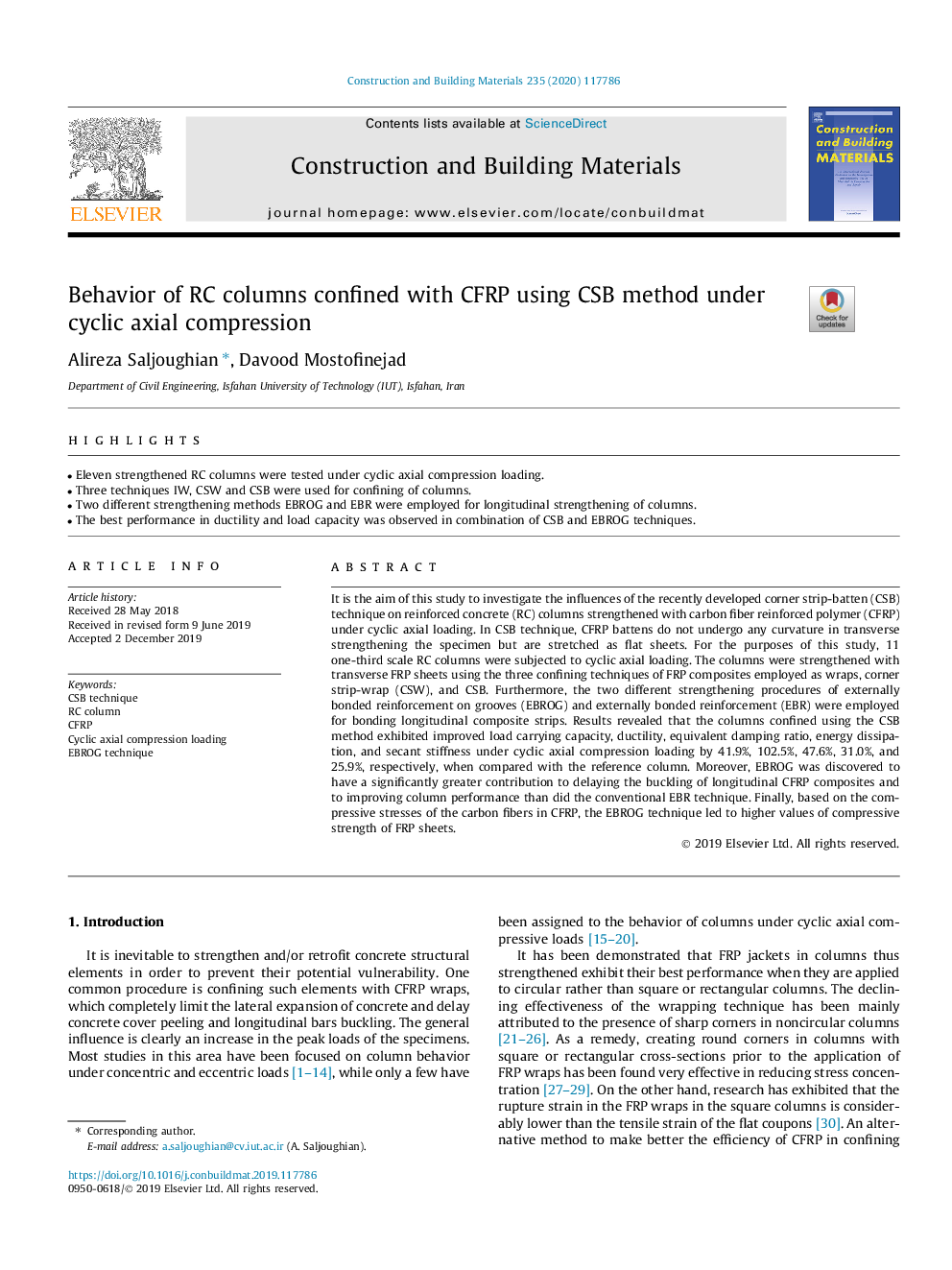| Article ID | Journal | Published Year | Pages | File Type |
|---|---|---|---|---|
| 13420019 | Construction and Building Materials | 2020 | 16 Pages |
Abstract
It is the aim of this study to investigate the influences of the recently developed corner strip-batten (CSB) technique on reinforced concrete (RC) columns strengthened with carbon fiber reinforced polymer (CFRP) under cyclic axial loading. In CSB technique, CFRP battens do not undergo any curvature in transverse strengthening the specimen but are stretched as flat sheets. For the purposes of this study, 11 one-third scale RC columns were subjected to cyclic axial loading. The columns were strengthened with transverse FRP sheets using the three confining techniques of FRP composites employed as wraps, corner strip-wrap (CSW), and CSB. Furthermore, the two different strengthening procedures of externally bonded reinforcement on grooves (EBROG) and externally bonded reinforcement (EBR) were employed for bonding longitudinal composite strips. Results revealed that the columns confined using the CSB method exhibited improved load carrying capacity, ductility, equivalent damping ratio, energy dissipation, and secant stiffness under cyclic axial compression loading by 41.9%, 102.5%, 47.6%, 31.0%, and 25.9%, respectively, when compared with the reference column. Moreover, EBROG was discovered to have a significantly greater contribution to delaying the buckling of longitudinal CFRP composites and to improving column performance than did the conventional EBR technique. Finally, based on the compressive stresses of the carbon fibers in CFRP, the EBROG technique led to higher values of compressive strength of FRP sheets.
Related Topics
Physical Sciences and Engineering
Engineering
Civil and Structural Engineering
Authors
Alireza Saljoughian, Davood Mostofinejad,
